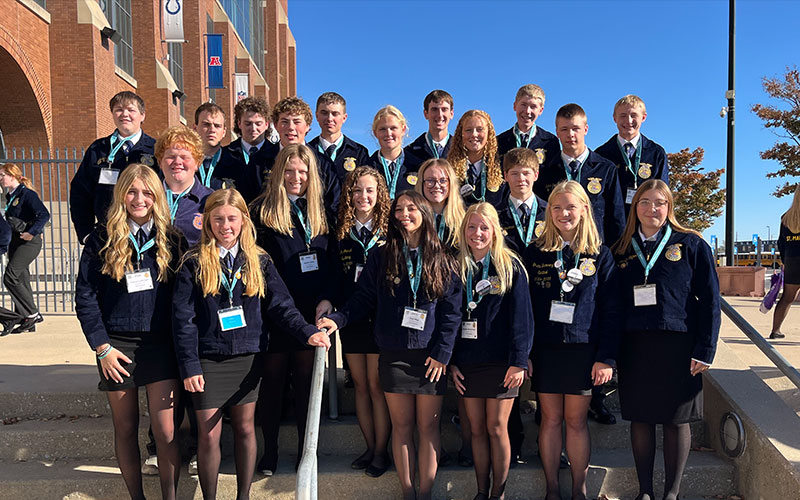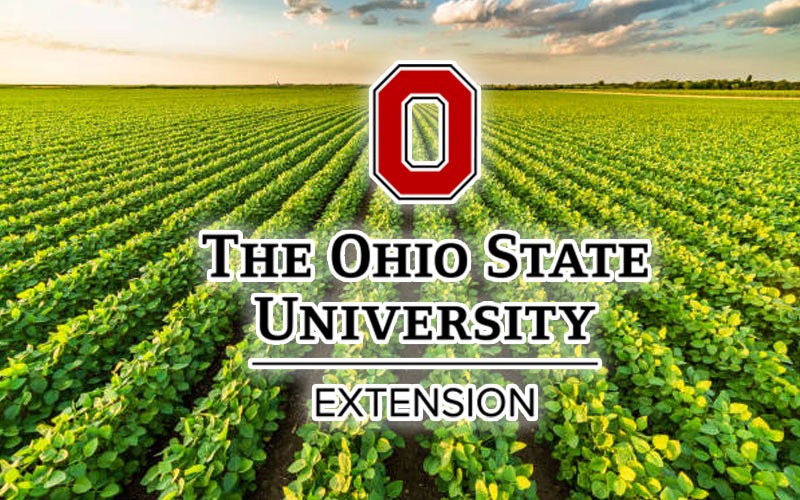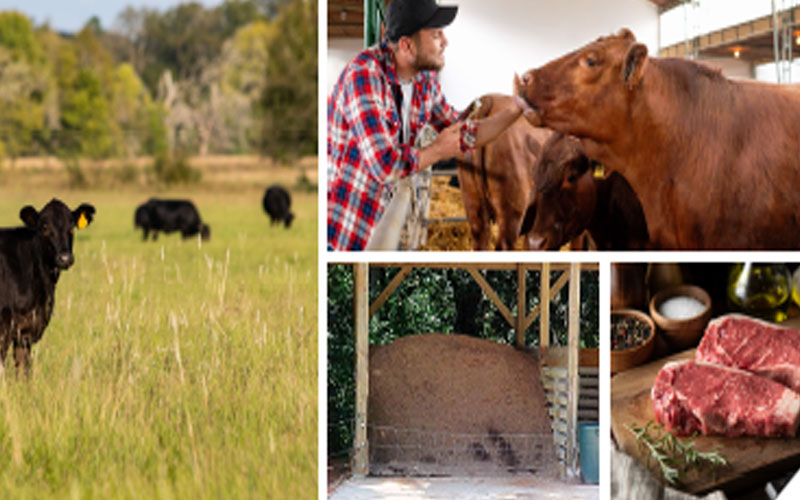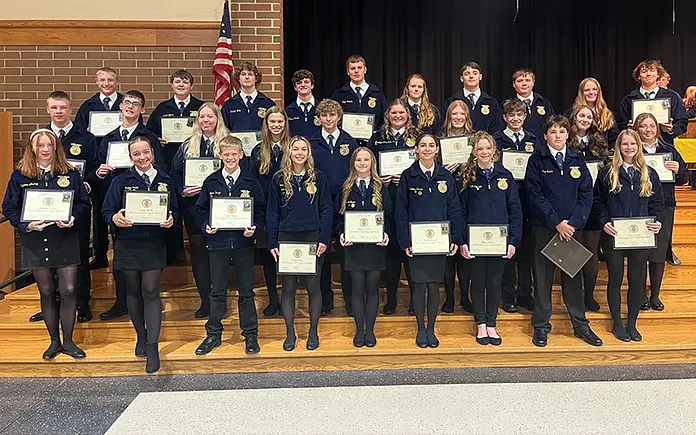
by CrownRandall | Nov 3, 2024 | Agriculture
INDIANAPOLIS, Ind. – The 97th National Convention and Expo was held from October 23 through October 26 in Indianapolis, Indiana. Over 70,000 FFA members and supporters attended this event making it the world’s largest youth event. Highlights of the National FFA Convention included Versailles FFA was announced as a 3-Star National FFA Chapter and 5 past graduates received their American FFA Degree. 3 Star is the highest ranking that a chapter can earn at the National FFA level.
On Saturday, Oct 26 at the National FFA Convention, 5 members of the Versailles FFA received their American FFA Degree. They included Hayley Smith, Laura Wuebker, Reagan Winner, Luke Winner, and Noah Shimp. This is the highest degree that the National FFA bestows upon its members. Less than 1 % of 1 million FFA members receive this highest degree.
While at the National FFA Convention besides attending the National FFA Convention sessions, members enjoyed tours at Matthew’s Feed & Grain, Abbott’s Candy Factory and Lincoln Tech. They also enjoyed Willies & Red, The Journey, Sauces on the Side, Bubba’s, Buckeye Bash at Kelsay Farms in Indiana, Cinch Rodeo at the Indiana State Fairgrounds, and a concert of Megan Moroney and Jake Smith at Gainbridge Fieldhouse Arena in Indianapolis, Indiana.
A special thank you to the members and parents who attended the convention. They included Colin Batten, Maggie McGlinch, Jeremiah Wagner, Allee Grimme, Haley Mescher, Ava May, Karlie Litten, Andrew Lyons, Dale Petitjean, Josh Henry, Caden Adkins, Lucy Schmitmeyer, Lucus Timmerman, Jake Bergman, Drew Gisendorff, Gabe McGlinch, Paige Gehret, Rhyland Broerman, Greta Broering, Jayna Luthman, Madylin Wagner, and Nathan Timmerman.
Take me back to the homepage

by CrownRandall | Nov 2, 2024 | Agriculture
Black Soybean: “Following the aftermath of severe drought and Hurricane Helene, soybean farmers in Ohio have faced considerable challenges with stem, pod, and seed decay, leading to the occurrence of blackened soybeans in certain regions.”
The weather conditions faced by soybean producers this year have caused multiple crop challenges, including a condition known as black soybean. In this article from OSU Extension Professionals Horacio Lopez-Nicora, Laura Lindsey, and Alexander Lindsey, discusses this condition, along with other conditions seen in soybeans this year. https://agcrops.osu.edu/newsletter/corn-newsletter/2024-38/black-soybean-ohio-addressing-stem-pod-and-seed-decay
Drought Related Fencing Issues: “The drought in this part of the country continues with very little chance of rain in the forecast. With the shortage of available pasture and hay supplies, livestock may start thinking the grass is greener on the other side of the fence. How secure are your fences? No one likes to get that wake-up call or knock on the door letting you know you have livestock out. There are a couple of fencing issues that are related to drought to keep in mind.” In this article, OSU Extension Educator Dean Kreager discusses the challenges brought about by the drought for livestock producers, particularly regarding fencing. https://u.osu.edu/beef/2024/10/30/drought-related-fencing-issues/
Growing Warm Season Native Grasses: “With Ohio experiencing record drought, livestock producers may find themselves in a tight spot when trying to provide forage for their cattle. In the long run, native warm season grasses can offer drought resistant forage during the summer slump when many cool season grasses slow in production.” The drought conditions experienced in Ohio have impacted nearly everybody. Those who grow forages for livestock have definitely faced challenges with producing enough feed for their animals. Gilbert Randolph, Nick Schell, and Jason Jones of Pheasants and Quail Forever discuss the details of growing these warm-season grasses for forage production. https://u.osu.edu/beef/2024/10/30/warm-season-native-grasses-a-drought-resistant-forage/
Producing Wagyu Beef: “What are the opportunities associated with producing Waygu beef? Is this an avenue to consider for beef producers? Should beef producers avoid this business?” Some beef producers choose to produce and market Wagyu Beef—often considered a higher class of beef, and a delicacy by many. If one chooses to raise Wagyu Bee, the marketing of their product must also be top-notch, to ensure that the extra effort of producing that beef is worthwhile. That is the purpose of this article from Dr. Andrew Griffith of the University of Tennessee. https://u.osu.edu/beef/2024/10/30/what-are-the-opportunities-associated-with-producing-waygu-beef/
Revised Ohio Agronomy Guide: “The Ohio Agronomy Guide was first published in 1966 and serves as the official compilation of adaptive research results and recommendations from applied research and educational programs. The 16th edition includes several updates…” The Ohio Agronomy Guide has long served as a valuable reference for Ohio Agriculturalists. The newest edition of the Guide includes several updates to ensure that the latest information is available. Learn more by reading the article from OSU Extension Specialists Laura Lindsey and Osler Ortez. https://agcrops.osu.edu/newsletter/corn-newsletter/2024-38/revised-ohio-agronomy-guide-available
Weather Update: “Dry conditions have plagued Ohioans throughout the growing season this year, with another below-average week of precipitation this past week. Since the remnants of Hurricane Helene moved through in late September, ample precipitation has been hard to come by. Several cities are experiencing one of their driest Octobers on record, including Cincinnati and Mansfield (2nd driest), Dayton (3rd driest), and Athens and Columbus (4th driest). Many of these locations have picked up less than three-tenths of an inch. Warmer than average temperatures this week have also notched the drought stress back up, with numerous reports of field fires in west central and northwest Ohio.” OSU Extension Ag Weather and Climate Specialist Aaron Wilson shares the latest weather information for the state of Ohio. He shares recent weather patterns as well as the forecast for the upcoming weather in Ohio. https://agcrops.osu.edu/newsletter/corn-newsletter/2024-38/potential-break-spooky-dry-weather
Take me back to the homepage

by CrownRandall | Nov 2, 2024 | Agriculture
The goal of the Ohio Beef Quality Assurance (BQA) program is to increase the competitive base for marketing Ohio cattle. BQA is a program to ensure that beef and dairy cattle are maintained in a manner that will result in a safe and wholesome beef product for the consumer. This program serves as an opportunity to gain or renew your existing certification (the cycle is 3 years).
There are 2 BQA sessions to choose from. Both sessions are identical. You do NOT need to attend both to earn BQA certification.
Attend the Animal Mortality Composting Certification if you compost animals. Certification is required by law if producers want to use composting as a method to deal with livestock and poultry mortality. This is a lifetime certification.
Please pre-register for one or both of these certifications with the QR code or at go.osu.edu/BQAMercer

by CrownRandall | Oct 22, 2024 | Agriculture
ANSONIA – On Thursday, October 17th, 2024 the Ansonia FFA held their Monthly meeting for October. For this meeting, they hosted members at the Spencer’s Cabin for a Halloween Party/FFA meeting. They started out the night with the FFA meeting around the campfire. At the meeting, they moved to send the Parli Pro team to the County and District competitions. They also went over announcements and officer reports. For the reporters’ report, they announced the October member of the month.
The member of the month for October was London Reichert. London has participated in multiple FFA activities, she placed 6th out of 25 at district job interview, and she is actively working as a top leader in our fall fruit sale.
After the meeting, they hosted the members into the cabin to get food. While they ate their food they sat in a circle and mingled. Once they finished eating, they opened up the rest of the activities to the members. There was corn hole, pumpkin painting, and hide and go seek.

by CrownRandall | Oct 22, 2024 | Agriculture
VERSAILLES – On Monday, October 14th, the Versailles FFA held their monthly meeting and Chapter FFA Degree Ceremony.
A chapter degree is obtainable by all second-year FFA members, and certain requirements must be met by those members.
Those members that received their Chapter FFA Degree include – Caden Adkins, Joshua Meyers, Cheyenne Archey, Kalivia Petitjean, Kallie Banks, Allison Pierron, Liam Barga, Margaret Schmitmeyer, Jace Bergman, Noah Seger, Jake Bergman, Mackenzie Spradlin, Seth Bergman, Kaden Starkey, Jenna Breeze, Landen Starkey, Jensen Bruey, Juli Stephan, Jack Subler, Carson DeMange, Matthew Subler, Alayna Dirksen, Makayla Subler, Monica Evers, Mason Smith, Cale Garland, Trina Tuente, Drew Geisendorff, Madilyn Wagner, Joshua Henry, Cole Williams, Trent Huber, Hunter Williams, Brooke Keiser, Eli Keiser, Brooklyn Livingston, Logan King, and Owen Mendenhall.
Also as part of the ceremony, Ohio FFA Vice-President at Large Josie Jennings spoke to the chapter degree recipients about trying new things even if it disorganises what you already had. To end the ceremony, all members and parents of the chapter degree recipients enjoyed desserts, apples and apple cider.

by CrownRandall | Oct 11, 2024 | Agriculture
“In the month of September, the ending Class III milk price was $23.42/cwt. September’s milk butterfat and protein prices were $3.56 and 2.18/lb, respectively. Butterfat remained about the same as it did in the previous month, only increasing $0.02/lb, while protein increased from its prior price of $1.95/lb in July. The Class III milk price is predicted to drop slightly in the next month to $23.30/cwt.”
In this article, Graduate Teaching Associate of the Department of Animal Sciences, Andie Majewski, gives an update on dairy economic information, including milk prices, corn silage prices, nutrient prices, and the economic value of feeds.
https://dairy.osu.edu/newsletter/buckeye-dairy-news/volume-26-issue-5/milk-prices-costs-nutrients-margins-and-comparisons





